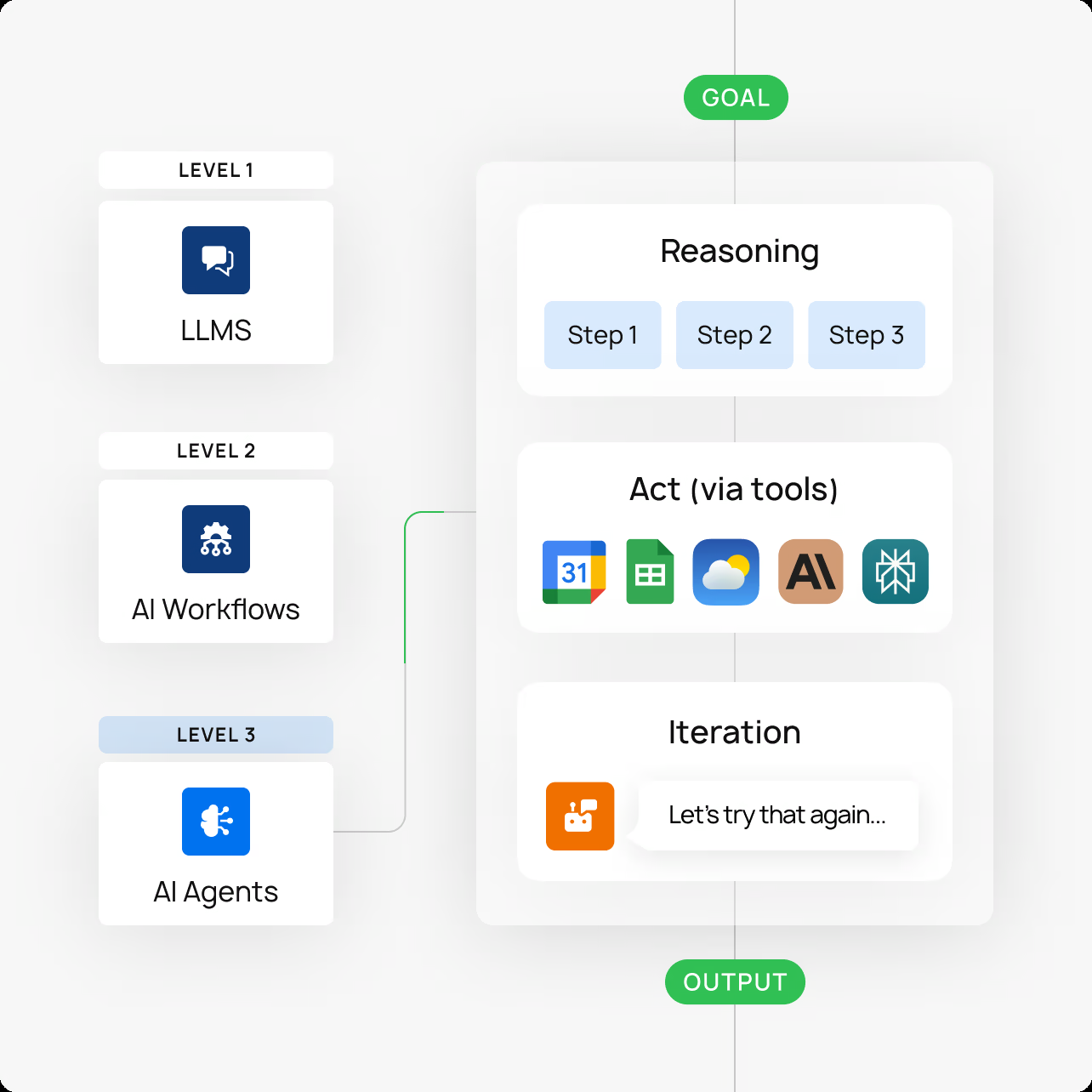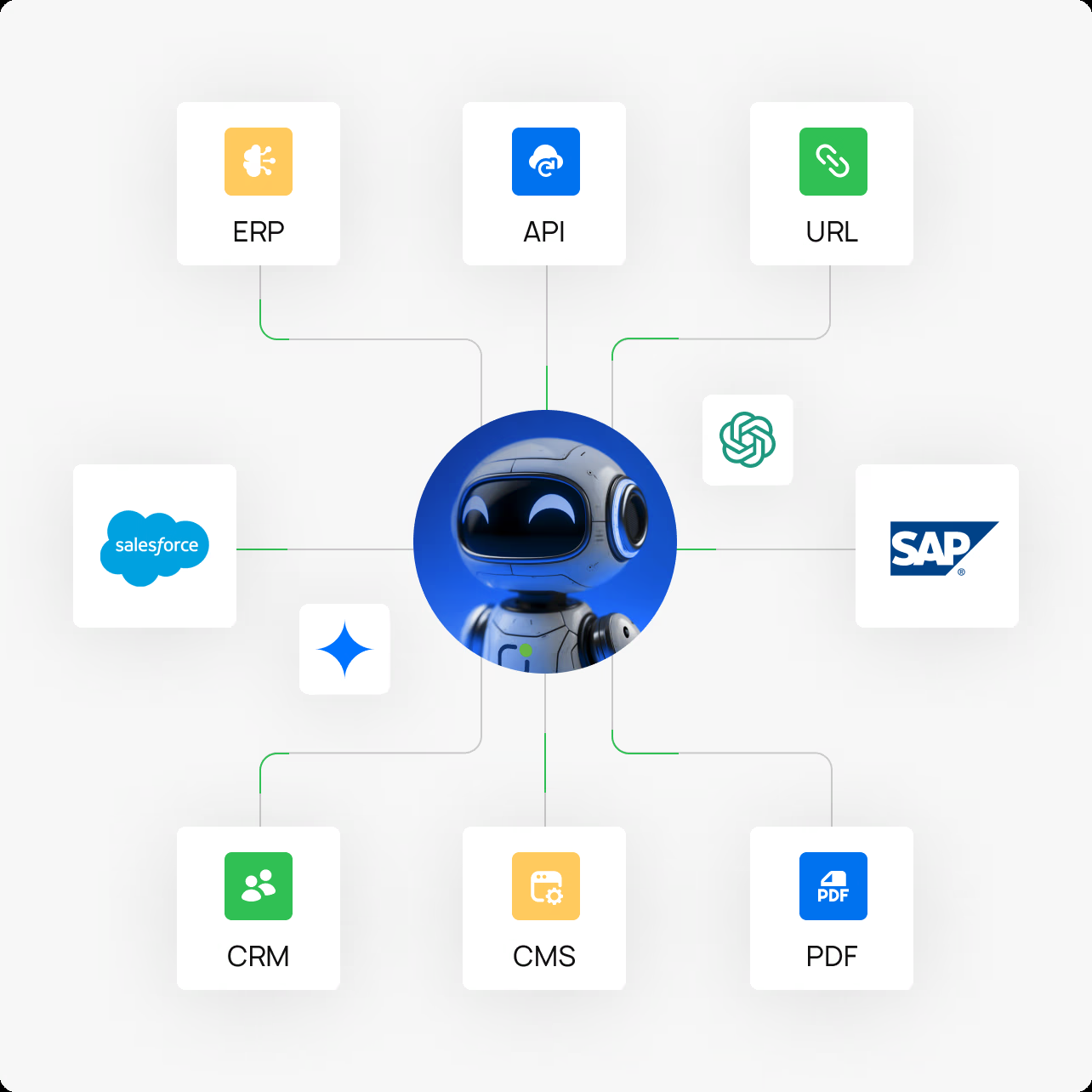What the Heck is MCP? A Deep Dive into the Future of AI Integration


I. What is MCP?
In the rapidly evolving landscape of artificial intelligence, a new and transformative concept is emerging, one that promises to redefine how businesses interact with technology: the Model Context Protocol, or MCP. At its core, MCP is an open-source standard designed to act as a universal translator, a common language that allows artificial intelligence models, particularly Large Language Models (LLMs), to communicate and interact with the vast world of external software, tools, and data sources. It represents a fundamental shift from AI as a passive generator of text or images to AI as an active, autonomous agent capable of performing complex tasks and orchestrating workflows across disparate systems.
To truly grasp the significance of MCP, one must first understand the problem it solves. Currently, the digital ecosystem of a typical business is a fragmented collection of specialized applications: a Customer Relationship Management (CRM) system, a Customer Data Platform (CDP), an e-commerce engine, an email service provider, analytics tools, and countless others. While these tools are powerful in their own right, they often exist in silos, communicating with each other through a brittle and complex web of custom-built APIs and middleware. Integrating a new AI tool into this environment has been a bespoke, resource-intensive process, requiring developers to write specific code for every single connection. If a company uses an AI from one provider to analyze data in its CRM and another AI from a different provider to draft marketing emails, each requires its own unique, handcrafted integration. This approach is not scalable, secure, or efficient.
MCP obliterates this paradigm. It introduces a standardized framework, much like how HTTP (Hypertext Transfer Protocol) created a universal standard for web browsers to request and display web pages, or how USB-C created a universal physical connector for devices. Instead of building dozens of unique point-to-point integrations, a business only needs to make its tools “MCP-compliant.” Once a tool can speak the language of MCP, any MCP-enabled AI model can instantly connect to it, understand its capabilities, and put it to work. This “build once, connect everywhere” philosophy is the cornerstone of the protocol. It democratizes access to tool usage for AI, moving beyond a world where AI is a simple question-and-answer machine to one where it is a proactive “doer.” It’s the critical infrastructure that allows an AI to move from simply suggesting a marketing campaign to actually building and launching it across multiple platforms.
II. What Does MCP Stand For?
In the specific and rapidly advancing context of AI-driven marketing, customer engagement, and agentic AI, the acronym MCP refers exclusively and unequivocally to the Model Context Protocol. While the business world is rife with acronyms, and MCP has historically been used to denote other concepts like “Multi-Channel Prospecting” or “Marketing Cost Percentage,” the emergence of this protocol has given the term a new, dominant meaning that is set to become a cornerstone of the next generation of software architecture.
Understanding this distinction is crucial. The Model Context Protocol is not a strategy, a metric, or a business concept; it is a foundational technology, a set of rules and standards that governs communication. Let’s break down the name itself to fully appreciate its function:
- Model: This directly refers to the AI models, such as the powerful LLMs (like GPT-4, Claude 3, or Gemini) that have captured the world’s attention. These models are the “brains” of the operation, possessing the reasoning and language capabilities to understand user intent.
- Context: This is the vital information the AI model needs to perform a task effectively. Context is more than just the data within the model’s training set; it’s real-time, dynamic information from the outside world. It’s the current inventory level of a product, a specific customer’s recent purchase history, the open-rate of the last email campaign, or the status of a support ticket. It also includes the capabilities of the tools the AI can use. The protocol provides this essential context, giving the model situational awareness.
- Protocol: This signifies that MCP is a standardized set of rules for communication. It defines the syntax, semantics, and synchronization of the interaction between the AI model and the external tools. This standardization is what ensures reliability, security, and interoperability. It guarantees that an AI from Company A can communicate with a tool from Company B as seamlessly as it communicates with a tool from Company C, without any custom code.
Therefore, when discussing the future of automated, intelligent business operations, MCP is the technical bedrock that enables AI models to be given the context they need to act. It is the framework that allows an AI to not just understand a request, but to understand what tools it has at its disposal and how to use them to fulfill that request securely and effectively.

III. The MCP Protocol Explained
The Model Context Protocol is designed with an elegant client-server architecture that facilitates secure and standardized communication between AI models and external tools. In this model, the AI application acts as the “client,” initiating requests based on a user’s intent or an automated trigger. The “server,” known as an MCP server, acts as a secure gateway or broker that sits in front of one or more business tools (like a CRM, database, or API). This architecture prevents the AI from having direct, unfettered access to a company’s critical systems, providing a crucial layer of security and governance.
The magic of the protocol lies in a few key components that work in concert:
- The Manifest: This is the cornerstone of discoverability. The MCP server publishes a manifest, which is essentially a detailed menu of its capabilities. This manifest, a machine-readable file, declaratively lists all the available tools and the specific actions each tool can perform. For example, the manifest for a marketing automation tool might declare actions like create_email_campaign, get_campaign_analytics, or add_user_to_segment. This allows the AI client to query the server and ask, “What can you do?” before attempting to perform a task.
- Actions: These are the specific, discrete functions that the AI can invoke. Actions are the verbs of the MCP world. They represent the real-world tasks the underlying tool can execute, such as query_customer_database, update_crm_record, or send_push_notification. Each action is clearly defined in the manifest, including the inputs it requires and the output it will produce.
- Schemas: To ensure data is exchanged correctly, MCP relies on schemas. A schema defines the structure and data type for the information passed back and forth. For instance, the create_email_campaign action would have a schema specifying that it requires a subject_line (string), email_body (string), and recipient_list_id (integer). This strict data typing prevents errors and ensures that the AI and the tool are speaking the exact same language.
- Scopes: Security and permissions are paramount. Scopes are used to define what a particular AI client is authorized to do. This is a powerful governance feature. An AI agent designed for marketing might be granted the scope to read_and_write to the marketing automation tool but only read-only access to the customer database. A lower-level support bot might only have the scope to read order history and create a support ticket, but not to process refunds. This granular control ensures that AI agents can only perform their designated functions, mitigating security risks.
How it Works in Practice:
Let’s revisit the practical example: An AI agent receives the request, “Find all customers who abandoned their cart in the last 24 hours and send them a 10% discount code.”
- Discovery: The AI agent first queries the relevant MCP servers, asking for their manifests. It discovers one server connected to the e-commerce platform and another connected to the email service provider.
- Planning: The AI examines the manifests. It sees the e-commerce server has an action get_abandoned_carts(timeframe) and the email server has an action send_transactional_email(recipient, template_id, discount_code). The AI formulates a plan: first, call the e-commerce action, then loop through the results to call the email action for each customer.
- Execution & Scopes: The AI, acting as the client, sends a structured request to the e-commerce MCP server to execute get_abandoned_carts(“24h”). The server checks if the AI’s scope allows this action. If so, it queries the e-commerce database and returns a list of customers. The AI then makes a series of calls to the email MCP server, providing the customer details and a discount code for each. The email server verifies the AI’s scope and executes the send_transactional_email action.
- Confirmation: The MCP servers return success (or failure) messages for each action. The AI monitors these responses and, once all emails are sent, confirms to the user that the task is complete.

IV. MCP Examples in Action
The true power of the Model Context Protocol is best understood not as an abstract concept, but through its transformative application in real-world business scenarios. MCP acts as the central nervous system connecting the AI “brain” to the “limbs” of the organization—its various software tools—enabling a level of automation and intelligence that was previously the stuff of science fiction.
E-commerce Customer Recovery:
- Before MCP: A marketing manager notices a high cart abandonment rate. They ask an analyst to pull a list of users who abandoned carts yesterday. The analyst manually exports a CSV file. The manager then imports this list into the email marketing tool, manually creates a new campaign with a discount, and schedules it to be sent. The entire process is manual, slow (often taking 24-48 hours), and misses the critical window for recovery.
- With MCP: An autonomous AI agent is given a simple directive: “Reduce cart abandonment.” Using MCP, the agent continuously monitors the e-commerce platform’s API for cart_abandoned events in real-time. The moment a cart is abandoned, the agent instantly accesses the Customer Data Platform (via another MCP connection) to enrich the user’s profile. It might find this user has a high lifetime value and prefers mobile notifications. Instead of just email, the agent decides to send an interactive push notification with the 10% discount, executing the send_push_notification action through the marketing automation platform’s MCP server. This happens within minutes, not days, dramatically increasing the chance of conversion. The agent logs every action and its outcome, learning and optimizing its strategy over time.
Dynamic Content Strategy and Creation:
- Before MCP: An SEO strategist uses a tool to identify a trending keyword. They write a creative brief in a document, assign it to a content writer, who then writes the article. An editor reviews it, and finally, a web producer manually uploads and formats the article in the Content Management System (CMS). The process involves multiple handoffs and can take weeks.
- With MCP: An AI content strategist is tasked with “improving organic traffic for Topic X.” The AI uses MCP to connect to SEO tools (to analyze keyword trends and competitor content), web analytics (to see what content currently performs well), and the company’s internal product database (to ensure technical accuracy). The AI synthesizes this information and generates a comprehensive, SEO-optimized draft. It then uses its MCP connection to the CMS to execute a create_draft_post action, uploading the article complete with formatting, images, and internal links. It can then notify the human editor via Slack (another MCP-enabled action) that the draft is ready for final review. What took weeks now takes minutes, allowing the marketing team to operate at the speed of trends.
Integrated, Proactive Customer Support:
- Before MCP: A customer initiates a chat with a simple chatbot. The chatbot can only answer pre-programmed questions from a knowledge base. When the customer asks, “Where is my order?”, the bot replies, “Please call our support line with your order number.” The frustrated customer calls, waits on hold, and has to explain their issue from the beginning to a human agent, who then has to look up the order in a separate system.
- With MCP: The customer chats with an AI-powered agent. When they ask, “Where is my order?”, the AI uses MCP to securely authenticate the user and execute a get_order_status(customer_id) action on the e-commerce platform’s server. It instantly replies, “Your order #12345 is currently out for delivery and is expected to arrive today by 5 PM. Here is the tracking link.” The customer then asks to initiate a return for a different item from that order. The AI agent, using its MCP connection, checks the return policy, confirms the item is eligible, executes the create_return_label action, and sends the label directly to the customer’s email—all within the same, seamless conversation. No human intervention is required, providing an instant, satisfying resolution for the customer.

V. MCP for Marketing
For marketing departments, the Model Context Protocol is not merely an incremental improvement; it is a seismic shift that unlocks the holy grail of marketing: true, scalable, one-to-one personalization and automation. It provides the technical foundation to move from segmented campaigns to individualized, real-time conversations with every customer. MCP acts as the ultimate middleware, dissolving the silos between data, analytics, and execution channels, and placing an intelligent AI agent at the hub of all marketing activity.
From Personalization to Hyper-Personalization:
Traditional personalization relies on segmenting audiences based on broad, often stale, data points—demographics, past purchase categories, or location. MCP enables hyper-personalization, which is dynamic, contextual, and individual. Imagine a customer browsing a product page on a retail website. With MCP, an AI marketing agent can, in real-time:
- Access the Customer Data Platform (CDP) to see the customer’s entire history: their lifetime value, recent support interactions, and channel preferences.
- Query the e-commerce platform to check current inventory levels and related products.
- Connect to the analytics tool to see the specific path the user took to arrive on this page.
Synthesizing this context in milliseconds, the AI can orchestrate a unique experience. Instead of a generic “You might also like…” widget, it could trigger a personalized web push notification: “Hi Sarah, we see you’re looking at the blue running shoes. Great choice! We have them in your size, and they pair perfectly with the moisture-wicking socks you bought last month. We can offer you a 15% bundle discount if you buy both today.” This level of granular, real-time relevance, orchestrated across channels, is impossible with traditional, siloed marketing stacks but becomes standard with MCP.
The Dawn of Autonomous Campaign Orchestration:
MCP empowers AI agents to become autonomous marketing managers. A human marketer can set a strategic goal, such as “Increase app user engagement by 20% this quarter among users who haven’t purchased in 90 days.” The AI agent can then use MCP to execute the entire campaign:
- Analysis: It connects to the app analytics and CDP to identify the target audience and analyze their past behavior.
- Strategy: It decides on a multi-touchpoint strategy—perhaps an initial in-app message, followed by a push notification with a personalized offer, and finally an email with compelling user-generated content for those who don’t convert.
- Creation: It uses generative AI capabilities to draft the copy and select the imagery for each touchpoint.
- Execution: It uses MCP to command the marketing automation platform to send the in-app messages, push notifications, and emails at the optimal time for each individual user.
- Optimization: It continuously monitors the results via its MCP connection to analytics tools, performing A/B tests on the fly and reallocating budget or changing tactics based on real-time performance.
Closing the Insight-to-Action Loop:
One of the biggest challenges in marketing is the latency between discovering an insight and acting on it. An analyst might discover that customers who watch a specific product video are 50% more likely to convert, but it could take weeks to implement a campaign around this finding. MCP closes this loop instantly. An AI agent monitoring analytics can identify this correlation and immediately execute a workflow: “For all users who match our ideal customer profile and visit a high-intent page, proactively display the high-conversion product video in a pop-up modal.” This transforms the marketing department from a reactive team buried in data reports to a proactive, automated engine for growth.
VI. MCP for Customer Service
In the realm of customer service, the Model Context Protocol is the catalyst for a revolution, transforming the support center from a costly, often frustrating, necessity into a powerful engine for customer satisfaction and loyalty. MCP allows businesses to move beyond the limitations of simple, scripted chatbots and deploy truly intelligent AI-powered agents that can understand context, take meaningful action, and resolve complex issues autonomously. This elevates the customer experience while freeing human agents to focus on the highest-value, most empathetic interactions.
The Evolution from Chatbot to True Agent:
For years, customers have been conditioned to see chatbots as a frustrating first hurdle—a rigid decision tree that can only answer basic FAQs before inevitably defaulting to “Let me get you to a human agent.” MCP shatters this limitation. An AI agent enabled by MCP becomes a first-line resolution expert. When a customer asks, “My new device won’t turn on,” an MCP-powered agent can:
- Authenticate the User: Securely verify the customer’s identity.
- Access Order History: Use an MCP connection to the CRM or e-commerce platform to confirm the recent purchase and pull up the exact product model.
- Initiate Diagnostics: Guide the user through model-specific troubleshooting steps. If that fails, it can access the device’s IoT data (if available) to check for hardware faults.
- Take Action: If the device is faulty, the agent can access the company’s return and warranty system. It can check the warranty status, automatically process a replacement order, generate a return shipping label, and email it to the customer.
- Update Systems: Finally, it logs the entire interaction, including the reason for the return and the resolution, in the CRM, creating a complete record without any human data entry.
This entire process, which would have previously involved multiple calls, transfers, and manual processes, is completed in a single, seamless conversation. The chatbot has evolved into a true agent that does things, not just says things.
Seamless Human Handoff with Full Context:
Even with powerful AI, there will always be issues that require the nuance, empathy, or authority of a human expert. MCP makes the handoff process seamless and efficient. When an AI agent determines that human intervention is needed, it doesn’t just transfer a “cold” chat. Instead, it packages the entire context of the interaction—the customer’s identity, the issue, the steps already taken, relevant order numbers, and a summary of the conversation—and delivers it to the human agent’s console via an MCP connection. The human agent can immediately pick up the conversation without asking the dreaded question, “Can you please explain your issue from the beginning?” This respects the customer’s time, reduces frustration, and dramatically shortens resolution times.
From Reactive to Proactive Support:
The ultimate form of customer service is solving a problem before the customer even knows they have one. MCP makes proactive support a reality. An AI agent can monitor user behavior across a company’s digital properties. For example, it might detect a user repeatedly failing to complete a transaction on a checkout page. Instead of waiting for the user to abandon the session and perhaps complain on social media, the AI agent can proactively open a chat window: “Hi, it looks like you might be having trouble with the payment step. I can see the transaction was declined by the bank. Would you like to try a different card or use PayPal? I can help you with that right now.” This turns a moment of potential friction into a delightful, helpful experience, securing the sale and building significant customer goodwill.
VII. indigitall: An Early Adopter with an AI-First Approach
In the competitive landscape of marketing automation and customer engagement, simply bolting on AI features is not enough. True leadership requires a foundational shift, and this is where companies like indigitall are distinguishing themselves. By embracing the Model Context Protocol (MCP) as a core tenet of its architecture, indigitall is not just participating in the AI trend; it is building the future-proof infrastructure that will define the next decade of digital interaction. Their early adoption of MCP positions them as a visionary leader, providing their clients with a powerful and sustainable competitive advantage.
How indigitall’s Platform Weaponizes MCP:
indigitall’s entire customer engagement platform is designed to leverage the power of interconnected, agentic AI, a feat made possible by MCP.
- Breaking Down Silos: At the heart of the indigitall platform is the ability to connect disparate systems. MCP is the engine that allows their AI to talk to a client’s CRM (like Salesforce), their e-commerce backend (like Shopify or Magento), their analytics suite (like Google Analytics), and their contact center software. This creates a unified view of the customer and enables actions to be taken across any of these platforms from a single, centralized intelligence hub. An insight gained from a web interaction can trigger a personalized journey that unfolds across push notifications, email, and even a follow-up call scheduled in the contact center.
- Enabling True Omnichannel Journeys: Many platforms claim to be “omnichannel,” but in reality, they just offer multiple channels that operate independently. indigitall uses MCP to deliver a truly seamless experience where a customer’s context is maintained and travels with them from one channel to the next. A conversation that begins with an AI agent on the web can be seamlessly continued within the mobile app or via WhatsApp, because the AI agent retains the full history and context of the interaction, regardless of the touchpoint. This eliminates friction and creates a single, continuous conversation with the brand.
- Powering Real-Time, Actionable Intelligence: The protocol allows indigitall’s AI to move beyond batch processing and historical data. It can react to live events as they happen. When a customer enters a geofenced area, abandons a cart, or uses a specific feature in an app, MCP allows the AI to receive this signal and immediately trigger a personalized, context-aware action. This is the difference between sending a generic “we miss you” email a week later and sending a highly relevant “Welcome to our flagship store! Show this message for a special gift” push notification the second a loyal customer walks through the door.
indigitall’s AI-First Approach in Practice:
indigitall’s commitment to an AI-first strategy is evident in its product suite, all of which is supercharged by the connectivity that MCP provides:
- Conversational AI: Their AI agents are not simple chatbots. Thanks to MCP, they are true transactional agents that can access external systems to answer complex questions, process orders, manage bookings, and resolve support issues, turning every conversation into a potential conversion or a successful resolution.
- Predictive AI: The platform’s machine learning models do more than just analyze data; they make predictions and then act on them. The AI can predict the optimal time and channel to engage a user, identify customers at risk of churning, and then use MCP to automatically enroll them in a personalized retention journey.
- Generative AI: indigitall leverages generative AI to streamline the creation of marketing campaigns. Marketers can provide a simple prompt, and the AI can generate compelling copy and creative for emails, push notifications, and SMS messages. MCP then allows the AI to take that generated content and directly insert it into a new campaign within the marketing automation tool, ready for launch.
By architecting its platform around the Model Context Protocol, indigitall is providing its clients with more than just a set of tools; it is providing them with an agile, intelligent, and interconnected ecosystem built for the future of customer engagement.












